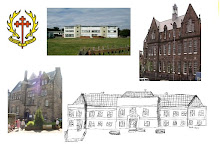
Traffic lights are used in many different areas of the curriculum and can be used by students at all levels to help them to assess where they are in their learning and identify what needs to be addressed for them to move forward with a particular learning outcome or in a block of study.
The posters above are examples of traffic lights displayed on classroom walls, to prompt pupils to reflect on how well they have understood a lesson or completed a piece of work. A green light means they have fully understood an instruction or a learning outcome. An amber light means that they are getting there, but still are unsure and may need support. A red light means that they have not yet understood and will need more teaching in this particular area.
Traffic lights are used in a variety of formats to assist students to reflect on their learning, as well as to help in opening communication channels between individuals and class teachers. It can be confidential and does not draw unnecessary attention to the fact that an individual has difficulty. Posters may be on the wall and pupils can use the statements in order to colour in a traffic light shape on their page. Traffic lights sheets may be given to a whole class or to an individual in order to help them reflect on several learning outcomes at the one time. Traffic light prisms can be easily constructed with laminated paper and pupils can turn prism to show the teacher whether or not they need help during a lesson.
Traffic lights can be used at different stages of learning:-
· They can be used after initial instructions have been given, before progressing to a practical task.
· They can be used towards the end of a block of study to help students focus on learning outcomes before sitting an end of unit assessment.
· They can be used during a lesson to unobtrusively alert the teacher to individuals or groups who would benefit from assistance.
· They can be used over a whole school session to demonstrate progress with a group of students, some of whom may have started the session at red or amber and by the end of the year have moved on to a green light for that block of study.
Next steps
The important stage when using traffic lights is to consider what the next steps are to be.
If every student shows a green light in every area then the teacher will be happy to move on to the next stage in learning, or to present the class for a written assessment.
If a large number of students are showing amber on a learning outcome then perhaps the topic needs more input, or a new approach to teaching this topic should be considered.
If a small group are red or amber, this group can be targeted for further teaching. If a large number of pupils are showing red on a learning outcome this could be an indication to the teacher that either the topic was not covered sufficiently or there are serious misunderstandings about the success criteria.
Analysis of students’ traffic lights sheets can assist the students in identifying their next steps and their targets for the future. It can also be reassuring and confidence boosting when they can track their own progress. The teacher can also analyse the traffic lights results to decide on next steps for the whole class, certain groups, or individuals. This process can also facilitate the teacher’s own reflection on the success of the teaching methods used.
Traffic Lights can be fun to use !
Traffic Lights can be easy to implement!
Traffic Lights facilitate planning of next steps and future targets !
Are you ready? Get set! Go!
















